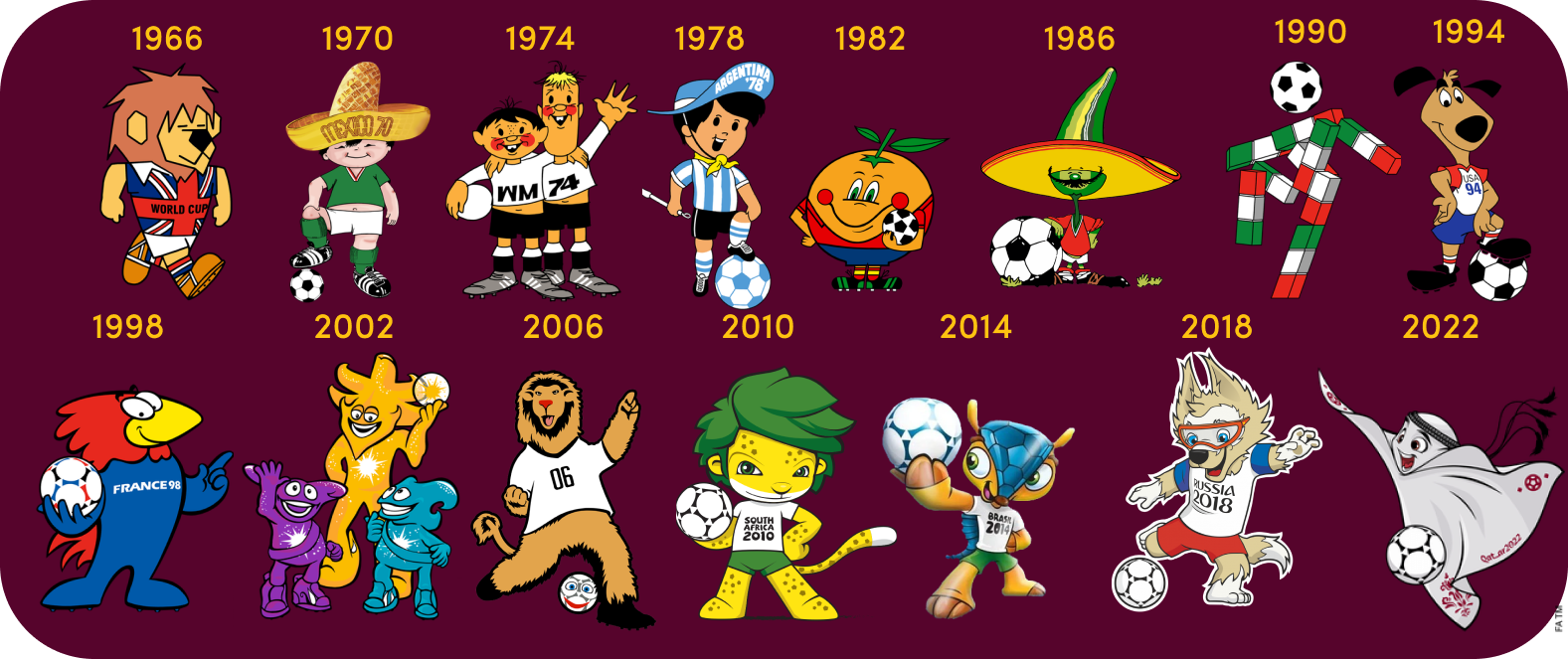Top 10 World Cup Mascots and Their Meaning
Top 10 World Cup Mascots and Their Meaning
Blog Article

Mascots have always played a significant role in the FIFA World Cup, bringing an extra layer of excitement, culture, and charm to the world's most beloved sporting event. Each mascot represents something special about the host nation's culture, traditions, and values. In this article, we’ll dive deep into the stories behind the top 10 World Cup mascots and explore the fascinating meanings they hold. Slot dana 5000
1. Zabivaka (Russia 2018)
Zabivaka, which translates to "the one who scores," was the official mascot for the 2018 World Cup in Russia. Designed as an energetic wolf wearing sports goggles, Zabivaka symbolized fun, charm, and confidence. The wolf represents a creature revered in Russian folklore for its courage, strength, and teamwork. Zabivaka's goggles represented precision and focus, characteristics crucial for soccer players aiming for victory.
2. Fuleco (Brazil 2014)
Fuleco was a vibrant, three-banded armadillo mascot for the Brazil 2014 World Cup. Named from a combination of the Portuguese words "futebol" (football) and "ecologia" (ecology), Fuleco emphasized environmental conservation. The three-banded armadillo is native to Brazil and was specifically chosen to raise awareness about the critically endangered status of this species, highlighting Brazil’s commitment to sustainability and ecological responsibility.
3. Zakumi (South Africa 2010)
Zakumi, a cheerful leopard with striking green hair, was the 2010 World Cup mascot representing South Africa. The name “Zakumi” combines “ZA,” the international abbreviation for South Africa, and "kumi," meaning "ten" in various African languages. Zakumi’s green hair symbolized the football field, and the leopard depicted speed, agility, and spirit, proudly showcasing South Africa’s dynamic energy and wildlife heritage.
4. Goleo VI & Pille (Germany 2006)
Goleo VI, a lion dressed in a German national team jersey, accompanied by Pille, a talking football, were the mascots of the 2006 World Cup. The lion, an international symbol of bravery and leadership, signified Germany's strength and passion for football. His companion Pille symbolized the playful side of the sport, enhancing the mascot’s interactive appeal. Their playful partnership emphasized teamwork, humor, and unity, essential ingredients for an enjoyable World Cup experience.
5. Ato, Kaz & Nik (South Korea & Japan 2002)
The first-ever joint World Cup hosting by two nations was represented by three imaginative characters—Ato (yellow), Kaz (purple), and Nik (blue). Collectively known as the "Spheriks," these futuristic mascots symbolized unity, peace, and cooperation. Each character had distinct personalities and appearances, representing a bridge between different cultures. They also emphasized the tournament’s futuristic vision, showcasing innovation and friendship across borders.
6. Footix (France 1998)
Footix, a vibrant rooster holding a football, was the mascot of the 1998 World Cup in France. The rooster (coq in French) is a national emblem of France, symbolizing pride, strength, and confidence. The name Footix derived from "football" combined with the suffix "-ix," common in the famous French comic series Asterix, highlighting France's rich cultural heritage. Footix was hugely popular and became an enduring symbol of French national pride.
7. Striker (USA 1994)
Striker, the friendly dog dressed in red, white, and blue, was the official mascot for the USA-hosted 1994 World Cup. Designed to reflect the American spirit, Striker was cheerful, playful, and accessible, symbolizing friendliness and hospitality. His character made the international audience feel welcome, embodying the warmth and enthusiasm of America’s sporting culture.
8. Ciao (Italy 1990)
Ciao, the abstract, stylized stick figure made of cubes with a football head, represented Italy in the 1990 World Cup. Its name, derived from the popular Italian greeting meaning both "hello" and "goodbye," reflected Italy’s openness and hospitality toward the world. Ciao’s simple yet striking design represented Italy’s flair for modern art, fashion, and creativity, highlighting the country’s dedication to style and innovation.
9. Pique (Mexico 1986)
Pique, the cheerful chili pepper donning a sombrero, was the colorful mascot of the 1986 Mexico World Cup. The chili pepper, iconic in Mexican cuisine, symbolized Mexican tradition and flavor. Wearing a traditional sombrero, Pique captured Mexico’s vibrant spirit, passion, and warmth, showcasing the nation’s rich cultural heritage and culinary tradition to global audiences.
10. Gauchito (Argentina 1978)
Gauchito, a young boy wearing traditional Argentine attire with a hat, neckerchief, and whip, was the mascot for Argentina’s 1978 World Cup. Inspired by the gaucho—Argentina's national symbol representing freedom, courage, and rural traditions—Gauchito symbolized national pride and youthful energy. His presence aimed to evoke passion and unity, inspiring both players and fans alike.
Why Mascots Matter?
Mascots are more than just colorful symbols; they encapsulate the cultural, historical, and social identities of host nations. They serve as memorable ambassadors, enhancing audience connection, and fostering deeper cultural appreciation. Mascots also bridge gaps between diverse cultures, making international events like the World Cup more inclusive and engaging.
Each World Cup mascot provides a lasting legacy, embedding the host nation’s character into the tournament’s history and global memory.
In conclusion, these mascots not only bring smiles and enthusiasm to football fans but also beautifully reflect the values, traditions, and identities of their host countries. As we look forward to future World Cups, we eagerly anticipate new mascots that will further enrich this beloved global tradition.